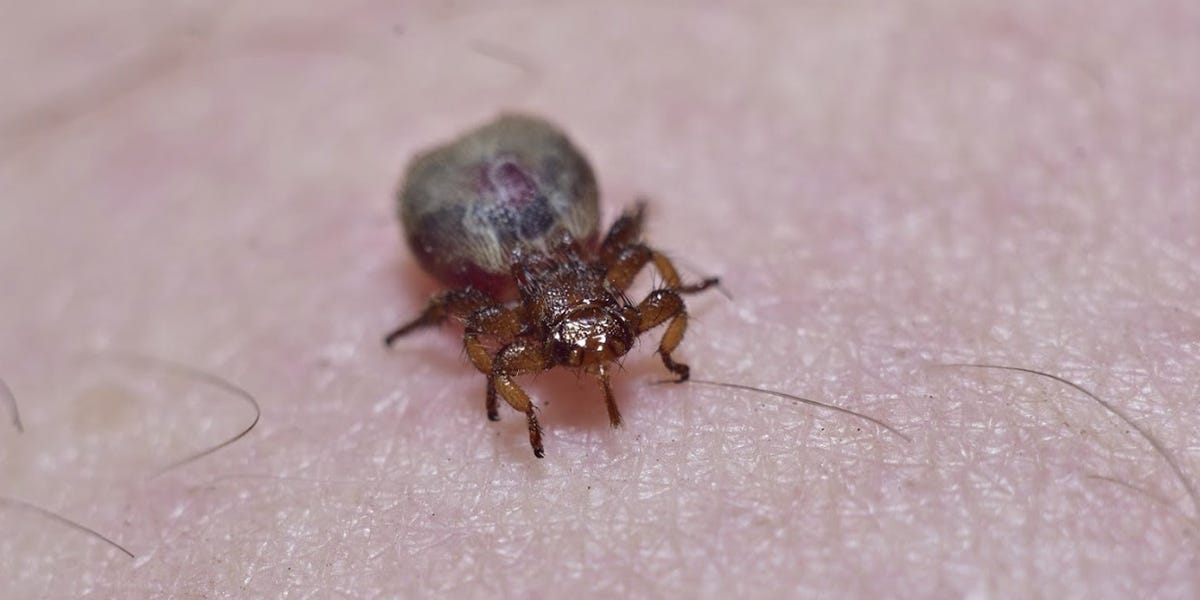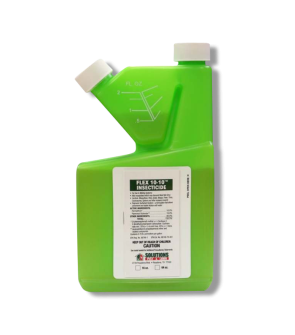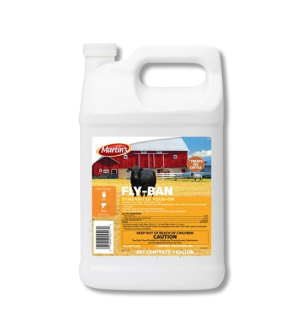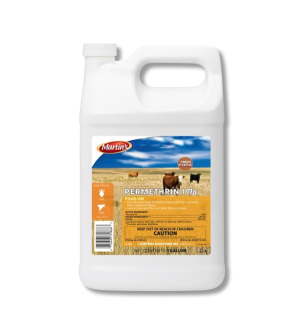Gain access to personalized product screening, the best pricing, rewards, and more!
Most Effective Products
Sheep Ked Control: How to Get Rid of Sheep Keds
This article is a sheep-ked control guide. Using the suggested products and methods, you will control sheep keds. Follow this guide and use the recommended products, and we guarantee 100% control of sheep keds.
The sheep ked, often called the sheep tick, is a common blood-feeding pest of sheep. Despite its name, it is a wingless fly with a tick-like appearance that spends its entire lifecycle on the sheep. Although sheep keds are a type of fly, they are carried from one sheep to another by direct contact.
Unlike other tick species, keds are especially harmful to sheep due to their ability to bite and not once like ticks repeatedly. Once bitten, infested sheep can suffer from blood and nutrition loss. Bites from sheep keds create measurable irritation, which causes the animal to rub, bite, and scratch at the wool, reducing the amount and quality of the fleece. Consistent feeding also leads to excrement from the sheep's ked, creating discoloration of the fleece.
The life cycle of the sheep ked is unique. Each sheep ked can live up to 6 to 8 months, during which the females produce 10-12 larvae. The larvae mature into breeding adults within several weeks and continue to spread the infestation quickly. By reading this easy-to-use DIY guide, you can learn how to control swiftly sheep keds on sheep and prevent the rest of the flock from becoming infected.
Identification

Before proceeding, you must confirm that the pest infesting your sheep is a ked. Misidentification can lead you to use the wrong products, costing you time, money, and the safety of your sheep. Below, you can find common characteristics that set sheep keds apart from common ticks.
- Measuring between 4 to 6 mm long with a small head.
- Sheep keds have 6 legs tipped with sharp claws that grip tightly onto wool and skin, unlike true ticks, which have 8 legs. When disturbed, sheep keds move very fast, darting sideways and backward with a crab-like motion.
- Wingless and has sharp mouth parts to feast on capillaries beneath the skin.
- The larvae's coloration ranges from gray to brown. A few hours after birth, the larvae's skin becomes brown and forms a hard puparium.
- The abdomen is disproportionately large and swollen, especially when ingested with blood.
Use the image and description above to identify sheep keds on your sheep correctly. If unsure, contact us with a photo or the pest in a sealable container. Bring either of these things to one of our store locations or reach out by phone or email, which our representatives can assist with proper identification.
Inspection

Once you have determined you are facing an infestation of sheep keds, proceed with inspection. During this phase, you will locate the areas where the sheep keds are infesting on the sheep. This information will help you determine where to apply pesticide applications.
Where to Inspect
As their name suggests, sheep keds can be found on the sheep fleece for each stage of their life cycle. Inspect the sheep's neck, belly, flanks, shoulder, thighs, and breast by parting the wool with a glove-covered hand.
Young lambs are most susceptible to sheep keds because keds migrate to them after ewes have been sheared. Typically, ewes are sheared in the spring which also happens to be the most common time for lamb births. Combined with the loss of habitat and consistent contact by feeding, it makes lambs most susceptible to infestation.
What to Look For
Adult sheep keds crawl over the sheep's skin and feed on the animal's blood. Punctures made from feeding cause a skin condition called cockle. Cockles, also called rib cockles, are raised brownish nodule-like bumps. These nodules cannot be flattened out and are impenetrable to dyes, leading to economic loss if the skin is intended for leather purposes.
Breeding of sheep keds is continuous throughout the year, though slower in the winter. Feeding of sheep keds is evident when blood stains the sheep's wool. Heavily infested sheep may display weight loss, weakness, or fleece loss.
Treatment
Before proceeding with any treatment, it is best to consult with your veterinarian before using any pesticide material. When handling or applying pesticide material, you will need to wear personal protective equipment (PPE) to avoid unnecessary contact with product material.
Sheep ked populations begin during the autumn and winter months, peak in numbers from January to February, and then decline until early summer. Treatments should be made in the spring after shearing, with a type of application ranging from dipping to pour-on, spraying, sprinkling, or dusting. Pyrethroids are most effective against sheep keds.
When treating animals for sheep keds, the entire flock must be treated. Sheep keds is a fast-spreading contact pest, and if one sheep is infested, it can be assumed the entire flock is as well.
Step 1: Shear Sheep

Ideally, shearing should be done 30 to 60 days prior to lambing to reduce stress on the unborn lambs and mother sheep. Begin shearing from the sheep's stomachs, starting at the brisket to the open flank with long strokes. Make the first cut on the right-hand side, then on the left, and shear the leftover fleece in between.
Once the stomach is complete, shear the inside of the hind legs and the crotch. You will need to hold the sheep between your legs and bring the shear up alongside the sheep's leg and then across. Continue this process until the wool is removed. To protect female sheep teats, cover them with your hand or mark these areas to avoid harm.
Adjust the sheep until your foot is against the base of its spine and your right leg is between the sheep's hind legs. Hold the sheep's chin with your hand and stretch it towards you until its head is backward. Move the shears from the brisket to the neck, making sure to stop just below the sheep's chin.
To shear the sheep's back by moving it until it is on its right side. Keep your right foot between the hind legs and your left foot under its shoulder. Make long parallel blows along the spine to the head.
Shear the right side of the sheep by placing its nose between your knees to keep it in place. Shear along the sheep's right side of the head, neck, and shoulder.
The last step to shearing is to shear the sheep's right leg and hindquarters. With firm pressure, place your hand on the right flank of the sheep to keep it in place. In a curved motion, shear from the flank to the right leg.
Remove cut fleece after shearing, then properly dispose of it in an outdoor trashcan away from sheep's quarters or barns. Sheep keds can potentially travel from cut fleece to nearby sheep.
Step 2: Apply Flex 10-10

Flex 10-10 is an insecticide concentrate belonging to the chemical type pyrethroids. If applied according to the product label instructions, this emulsifiable concentrate can control and prevent various pests, including sheep keds, from attaching themselves to sheep.
Flex 10-10 may be applied as a dip to sheep or sprayed with a powerful enough sprayer to penetrate the wool. To ensure effective application with a sprayer, we recommend using a flexible sprayer capable of producing a light mist, like the Solutions 4 Gallon Battery-Powered Backpack Sprayer.
For moderate infestations, dilute 4 teaspoons of Flex 10-10 per gallon of water (1:200). This makes 0.05% permethrin a ready-to-use product. For severe infestations, use 8 teaspoons per gallon (1:100). This makes 0.1% permethrin a ready-to-use product.
Mix your solution by first pouring half the amount of water into the sprayer tank, then pouring in the measured amount of Flex 10-10. Next, add the remaining half of water into the spray tank and agitate until solution is well-mixed. Place the filled backpack sprayer onto your back and turn it on by flipping the power switch on the side of the sprayer. Wait for 5 to 10 seconds before spraying to allow the pump to pressurize.
Rotate the nozzle to adjust to a fogging mist. Carefully treat the sheep until it is thoroughly wet, avoiding the sheep's eyes and face.
For dip applications, choose a time when the weather is warm and the animal has enough time to dry. Use an in-ground or mobile cage dip with enough space for the sheep to come in and out of it. This cage dip should be deep enough for the animal to submerge themselves from the neck and below completely, but not the head.
To treat the sheep's face, it would be best to soak a cloth to avoid unnecessary contact with the animal's eyes, mouth, and nose. Then, allow the sheep to dry off in a warm place without rinsing or toweling.
Prevention
After the sheep keds have been eliminated, it is important to implement some preventative measures to ensure these pests do not return. Proceed with the following preventative measures to fight against future sheep ked reinfestations.
- Shear the entire sheep flock before lambing.
- Once sheep have been sheared, apply Flex 10-10 to sheep according to product label instructions. For preventative control, it would be best to apply at the beginning of spring and winter. If used in winter, choose a time when it is warm and sunny to allow the animals enough time to dry without becoming cold.
- Mow and prune overgrown woody areas, grass, and other foliage to eliminate potential sites of sheep keds.
- Keep up with quarterly shearing and immediately remove any fallen wool from the area to prevent attracting sheep keds or spreading this pest to other sheep.
Key Takeaways
What are Sheep Keds?
- The sheep kid is a wingless, blood-feeding fly.
How to Get Rid of Sheep Keds?
- To remove sheep keds, you will need to first shear your sheep then treat either with a dip or spray application of Flex 10-10. For best results, apply at the beginning of spring or before winter. Apply when weather conditions are warm and sunny to allow enough time for the animal to dry without becoming cold.
Prevent Sheep Keds Reinfestation
- Prevent the reinfestation of sheep keds with quarterly applications of Flex 10-10 and sheep shearing. Immediately remove trimmed wool to limit attractants and sites of breeding activity for keds.











